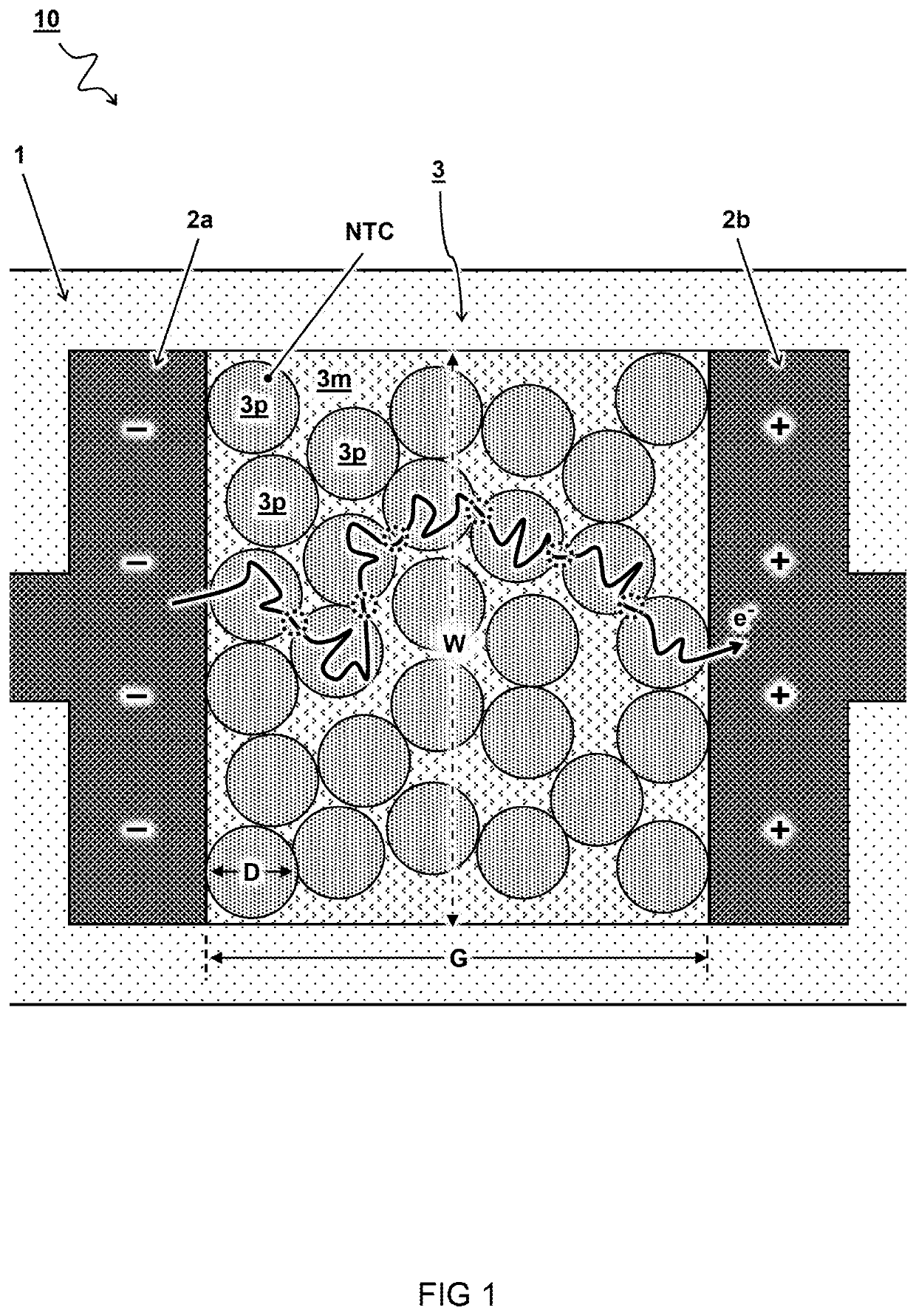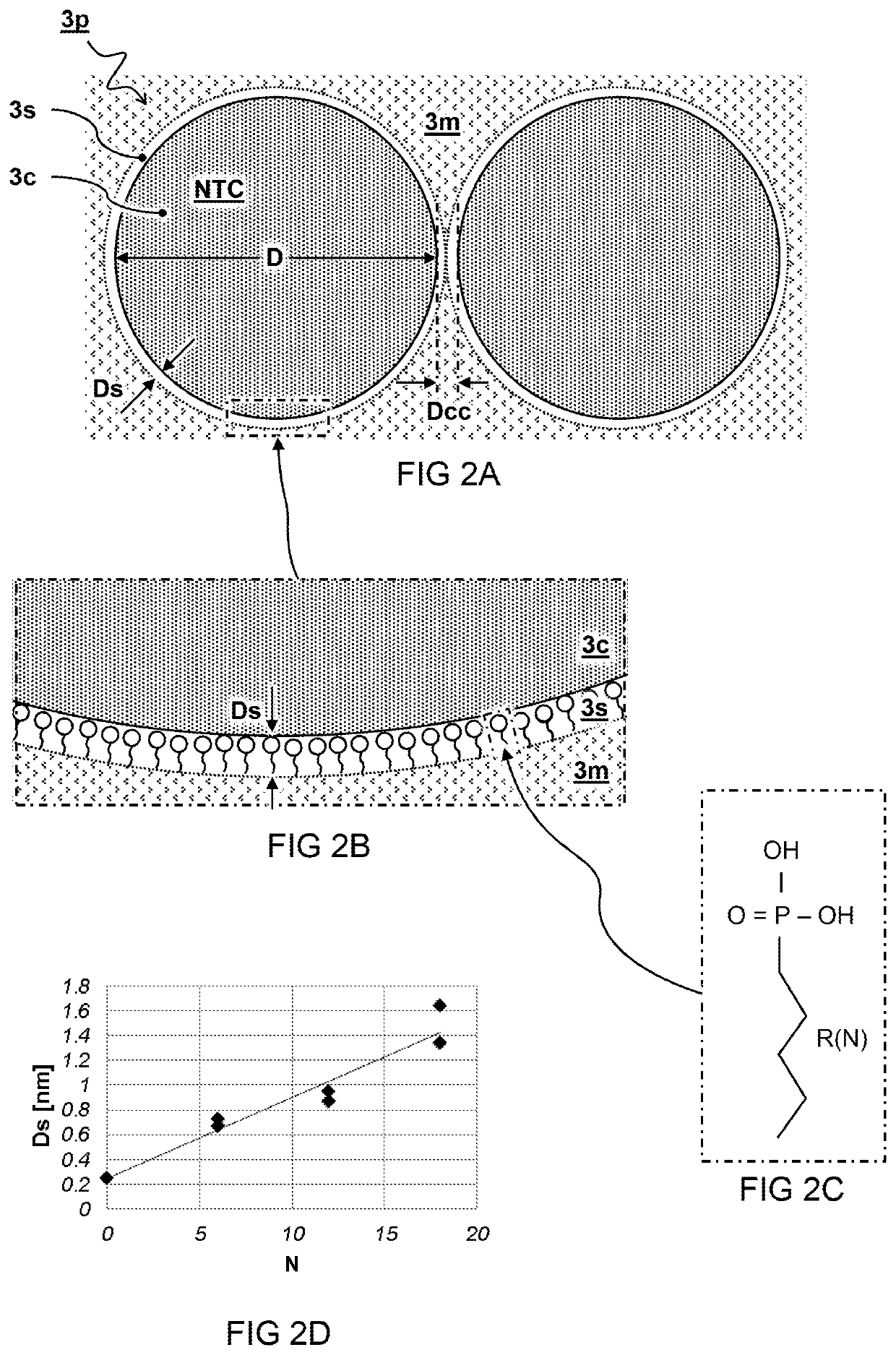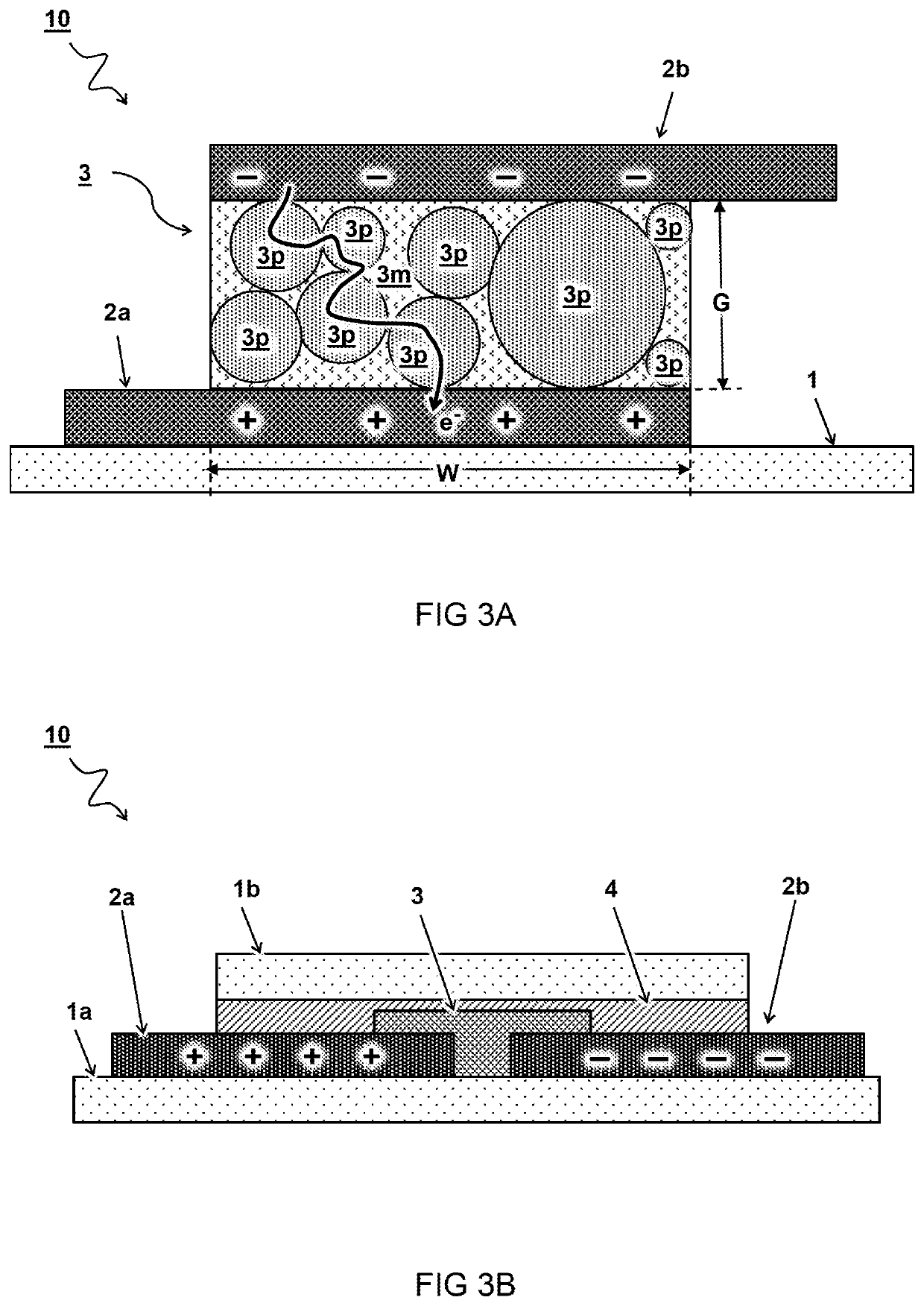Printed temperature sensor
a temperature sensor and printed technology, applied in the direction of resistor mounting/supporting, instruments, heat measurement, etc., can solve the problems of limited number of micro-particles forming the conductive path, unsuitable for low temperature processing difficult to negatively affect the thermoelectrical properties of ceramic based ntc, etc., to achieve the effect of providing mechanical stability of the film
- Summary
- Abstract
- Description
- Claims
- Application Information
AI Technical Summary
Benefits of technology
Problems solved by technology
Method used
Image
Examples
second embodiment
[0051]FIG. 3A schematically illustrates a side view of a second embodiment for a sensor 10. In the embodiment shown, the sensor 10 is formed by a vertical stack on the substrate 1. The stack comprises a layer of sensor material 3 deposited between layers forming a bottom electrode 2a and top electrode 2b. Accordingly, a distance of the electrode gap G may be determined by a layer thickness of the sensor material 3.
third embodiment
[0052]FIG. 3B schematically illustrates a side view of a third embodiment for a sensor 10. In the embodiment shown, the sensor material 3 between the electrodes 2a,2b is encapsulated by an encapsulation layer 4. In one embodiment, the substrate 1 is formed by two parts 1a, 1b on both sides of the sensor material 3.
fourth embodiment
[0053]FIG. 4A schematically illustrates a top view of a fourth embodiment for a sensor 10. In the embodiment shown, the electrodes 2a,2b form an intertwined finger structure defining an elongated meandering gap G with sensor material 3 there between. In one embodiment, the elongated gap has a gap length transverse to the electrode surfaces, wherein the gap length is at least ten times a minimum gap distance.
[0054]FIG. 4B schematically illustrates a side view of an embodiment for a flexible substrate 1, in this case with multiple sensors 10. In one embodiment, the substrate 1 with one or more sensors 10 is flexible, e.g. allowing a bending radius “r” of less than five millimeters without (the sensors) losing essential functionality. In another or further embodiment, the substrate 1 with one or more sensors 10 is stretchable, e.g. allowing an elongation of a least ten percent without losing essential functionality. For example, the substrate comprises a rubber substrate, e.g. with pol...
PUM
| Property | Measurement | Unit |
|---|---|---|
| diameter | aaaaa | aaaaa |
| temperature | aaaaa | aaaaa |
| diameter | aaaaa | aaaaa |
Abstract
Description
Claims
Application Information
 Login to View More
Login to View More - R&D
- Intellectual Property
- Life Sciences
- Materials
- Tech Scout
- Unparalleled Data Quality
- Higher Quality Content
- 60% Fewer Hallucinations
Browse by: Latest US Patents, China's latest patents, Technical Efficacy Thesaurus, Application Domain, Technology Topic, Popular Technical Reports.
© 2025 PatSnap. All rights reserved.Legal|Privacy policy|Modern Slavery Act Transparency Statement|Sitemap|About US| Contact US: help@patsnap.com



